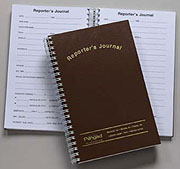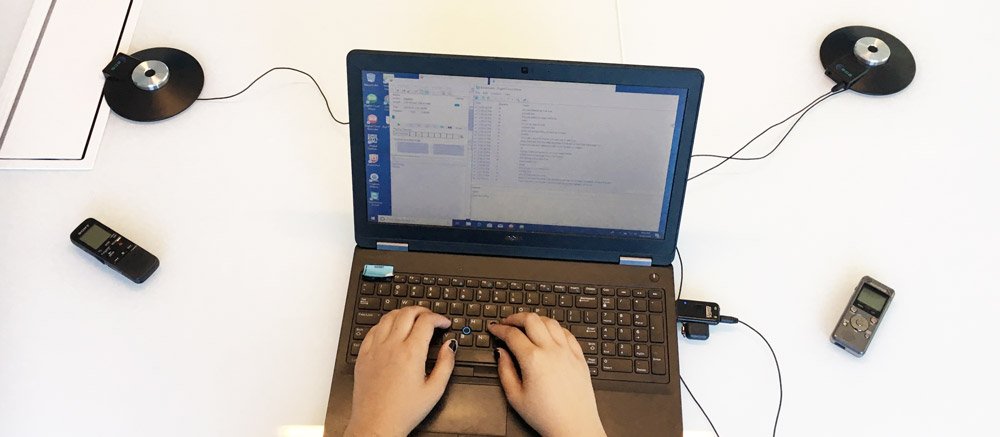A Day in the Life of a durham reporting Stenographer
Comprehending How Court Reporting Works: A Key Element in the Justice System
Court reporting plays a crucial duty in the lawful system. It guarantees that all court room process are documented accurately. Court reporters utilize specialized equipment and methods to create verbatim transcripts. These transcripts serve numerous purposes, consisting of allures and lawful clarity. Comprehending the complexities of court coverage discloses its relevance in maintaining the stability of justice. What obstacles do stenotype reporter deal with in this developing area?
The Function of Court Reporters in the Legal System
Stenotype reporter play an essential role in the legal system, ensuring precise and reputable paperwork of court room procedures. They are in charge of catching every talked word throughout tests, hearings, and depositions, producing a verbatim transcript that works as an irreversible record. This paperwork is vital for allures, providing a foundation for greater courts to assess cases.In addition to recording talked language, court press reporters also help with communication between attorneys, judges, and various other celebrations associated with lawful matters. Their work advertises transparency and liability within the judicial process.Utilizing specialized equipment and software application, court reporters must stay focused and attentive, typically working under pressure to satisfy tight target dates. Their transcripts are not just vital for lawful recommendation but also for preserving the honesty of judicial process. Eventually, stenotype reporter contribute substantially to the reasonable administration of justice, making certain that all voices are listened to and taped properly.
Important Abilities Required for Court Reporting
Court reporting demands an one-of-a-kind collection of abilities that are vital for precision and effectiveness. Mastery of stenography methods, strong listening and comprehension capabilities, and careful attention to information are important for success in this area. These skills enable court reporters to produce dependable transcripts that act as crucial documents in the legal system.
Proficiency of Stenography Techniques
While grasping stenography methods is important for aiming court press reporters, it requires dedication and technique to establish the necessary skills. Stenography includes making use of a specialized keyboard to catch talked words in genuine time, making precision and rate critical. Stenotype reporter have to learn to utilize shorthand symbols and develop muscle memory to ensure efficient transcription. Regular technique with dictation exercises helps in enhancing keying speed, while experience with legal terms improves comprehension during process. Furthermore, understanding the phonetic structure of the English language is substantial, as it assists in accurately capturing dialogue. Ultimately, proficiency in stenography not just assists in reliable interaction within the court room but additionally upholds the stability of the legal process.
Strong Listening and Comprehension
Reliable court reporting hinges not just on stenography abilities yet also on solid listening and understanding capabilities. Court reporters need to proactively listen to statements, legal arguments, and discussions, assuring they grasp the subtleties of talked language. This skill facilitates precise transcription of complex lawful proceedings, where every word issues. Understanding expands past surface-level understanding; press reporters should analyze context, tone, and intent to record the essence of discussions precisely. In addition, they usually run into specialized terms and jargon, calling for quick adjustment and retention of information. The capability to synthesize what is listened to while simultaneously recording is vital, as it ensures the stability of the official document. Strong listening and understanding are crucial in supplying precise and reliable court records.
Attention to Detail
Interest to information is an essential skill for court reporters, matching their listening and understanding capacities. This accuracy guarantees that every talked word, inflection, and subtlety is caught properly in records. Stenotype reporter should carefully keep in mind legal terms, names, and complicated dialogue to provide reputable records for legal process. A small oversight can result in considerable repercussions, potentially influencing situation results (durham reporting). Additionally, court reporters often work under stress, needing them to keep focus and precision in busy environments. Their interest to detail not just boosts the integrity of the judicial process however also cultivates count on amongst legal experts. Eventually, this ability is crucial for creating records that work as clear-cut documents in lawsuit, assuring justice is supported
The Modern Technology Behind Court Coverage
As court reporting evolves, the modern technology made use of by specialists in the field has come to be significantly sophisticated. Conventional shorthand writing has actually greatly been supplemented by advanced electronic devices that improve speed and accuracy. Stenographic equipments, geared up with specialized software program, enable stenotype reporter to record spoken words in real-time, converting them right into message instantly. This technology not just expedites the transcription process yet also reduces the capacity for errors.Moreover, voice recognition software is becoming a beneficial asset, enabling automatic transcription from audio recordings. This innovation provides an alternative for producing records when a human press reporter might not be offered. Furthermore, cloud-based storage remedies promote very easy accessibility and sharing of transcripts amongst lawful experts, making certain that vital information is easily available. As these modern technologies remain to advance, they play a crucial role in maintaining the stability and efficiency of the justice system, ultimately sustaining the important job of stenotype reporter.
The Process of Recording Lawful Procedures
The process of transcribing legal process needs a mix of skill and modern technology to establish precision and effectiveness. Stenotype reporter make use of specialized devices, such as stenographic machines, to record spoken words in real-time. This modern technology enables the press reporter to transform dialogue right into click text, guaranteeing that every statement made during a test or hearing is documented.Once the session ends, the first records undertake editing and enhancing for clearness and comprehensibility. Reporters might likewise incorporate audio recordings to cross-reference and validate the accuracy of their transcriptions. This meticulous process assurances that the last file mirrors an exact account of the proceedings.Additionally, stenotype reporter should keep a complete understanding of lawful terminology and court room treatments to efficiently equate talked language right into written type. Their competence not just help in creating reputable documents but also sustains the legal system by offering crucial documentation for appeals and Home Page future referrals.
Making Certain Accuracy and Stability in Court Records
Making sure precision and stability in court documents is critical for the judicial procedure. Stenotype reporter play an important role in capturing process properly, while innovations in modern technology enhance their capacity to maintain high requirements. In addition, upholding confidentiality standards is important to safeguard sensitive details within lawful records.
Function of Court Reporters
Court press reporters play a necessary function in the judicial system by recording accurate and verbatim accounts of lawful process. Their key responsibility is to assure that every talked word is recorded specifically, offering a dependable record that can be referenced in charms and future cases. By utilizing specialized equipment and techniques, stenotype reporter maintain the integrity of the court record, promoting openness and liability in the lawful procedure. They additionally help courts, attorneys, and other attorneys by supplying transcripts that are vital for understanding case information and legal debates - durham reporting. The accuracy of a stenotype reporter's work straight affects the end results of instances, highlighting their substantial contribution to the search of justice and the policy of legislation
Technology in Coverage
Improvements in modern technology have actually greatly transformed the area of court coverage, enhancing the accuracy and honesty of court documents. Modern court reporters make use of innovative tools such as stenographic devices and digital audio recording tools, assuring accurate transcription of talked words. These tools allow for real-time transcription, which supplies prompt access to court procedures and facilitates prompt decision-making. In addition, software application outfitted with sophisticated algorithms aid in recognizing and remedying errors, additionally bolstering the integrity of taped data. The combination of cloud storage options guarantees that documents are safely archived and conveniently retrievable, lessening the risk of loss or damages. On the whole, these technological technologies play a vital function in preserving the quality and reliability of court he has a good point paperwork in the justice system.
Preserving Privacy Specifications
A critical aspect of court reporting is maintaining confidentiality standards, which are necessary for making sure the precision and stability of court records. Court reporters are turned over with sensitive details, requiring rigorous adherence to moral standards and lawful provisions. This confidentiality safeguards not only the personal privacy of the included celebrations however also the reputation of the judicial process. Press reporters use safe and secure techniques for dealing with and keeping transcripts, typically employing encryption and limited accessibility protocols. Additionally, they must navigate the intricacies of different legal frameworks that control privacy in different territories. By supporting these requirements, stenotype reporter contribute substantially to the reliability of court records, fostering count on in the justice system and making sure that lawful proceedings can be conducted with miraculous professionalism and trust and regard for personal privacy.
Various Kinds Of Court Coverage Solutions
While the lawful landscape remains to progress, the range of court reporting services readily available has increased substantially to meet varied demands. Standard court reporting stays essential for recording verbatim records during tests and depositions. Nevertheless, added services have arised, including real-time reporting, which provides instant accessibility to transcriptions as they are produced, beneficial for attorneys and judges.Video court reporting has actually additionally gained appeal, enabling for aesthetic paperwork of witness testaments, boosting the record with non-verbal hints. Remote court coverage has actually come to be progressively appropriate, providing online deposition solutions to accommodate geographical constraints.Lastly, some court press reporters specialize in captioning solutions for the hearing impaired, making sure accessibility in legal process. This varied series of court coverage services allows lawyers to pick one of the most appropriate option for their specific circumstances, ultimately boosting the performance and efficiency of the justice system.

The Future of Court Coverage in a Digital Age

As technology continues to reshape the lawful area, the future of court reporting is poised for significant modification. The integration of sophisticated devices such as artificial knowledge and real-time transcription software program is becoming increasingly prevalent. These developments assure to improve the coverage process, permitting faster and a lot more accurate documentation of legal proceedings.Moreover, the change towards remote hearings necessitated by worldwide occasions has actually accelerated the adoption of electronic systems, enabling stenotype reporter to work effectively from various locations. This alteration additionally questions regarding the preservation of standard abilities, as the focus on modern technology could overshadow the nuanced art of shorthand reporting.Nonetheless, human stenotype reporter remain vital, providing context, feeling, and expertise that machines can not duplicate. As the lawful landscape progresses, a hybrid version that combines modern technology with human understanding may specify the future of court coverage, ensuring its relevance in an electronic age.
Often Asked Inquiries

What Qualifications Do Court Reporters Need to Operate In the Field?
Court reporters normally need a secondary school diploma, specialized training in court reporting, and certification from relevant specialist companies. Efficiency in shorthand or voice writing and strong language abilities are essential for success in this area.
Exactly how Long Does It Take to Become a Qualified Court Press Reporter?
Ending up being a certified stenotype reporter typically calls for 2 to four years of education and learning, consisting of specialized training and method. The period varies based on individual progression, the selected program, and the qualification procedure, affecting overall conclusion time.
Can Court Reporters Work From Another Location or In-Person?
Stenotype reporter can function both from another location and in-person, relying on the demands of an instance. Breakthroughs in modern technology have made it possible for several to give solutions using video clip conferencing, permitting flexibility in their job atmospheres.
What Is the Ordinary Wage for a Court Reporter?
The average income for a court press reporter varies by location and experience, normally ranging from $50,000 to $80,000 annually. Factors such as specialization and need can substantially affect private revenues within the profession.
Exactly How Do Court Press Reporters Deal With Legal Lingo During Proceedings?
